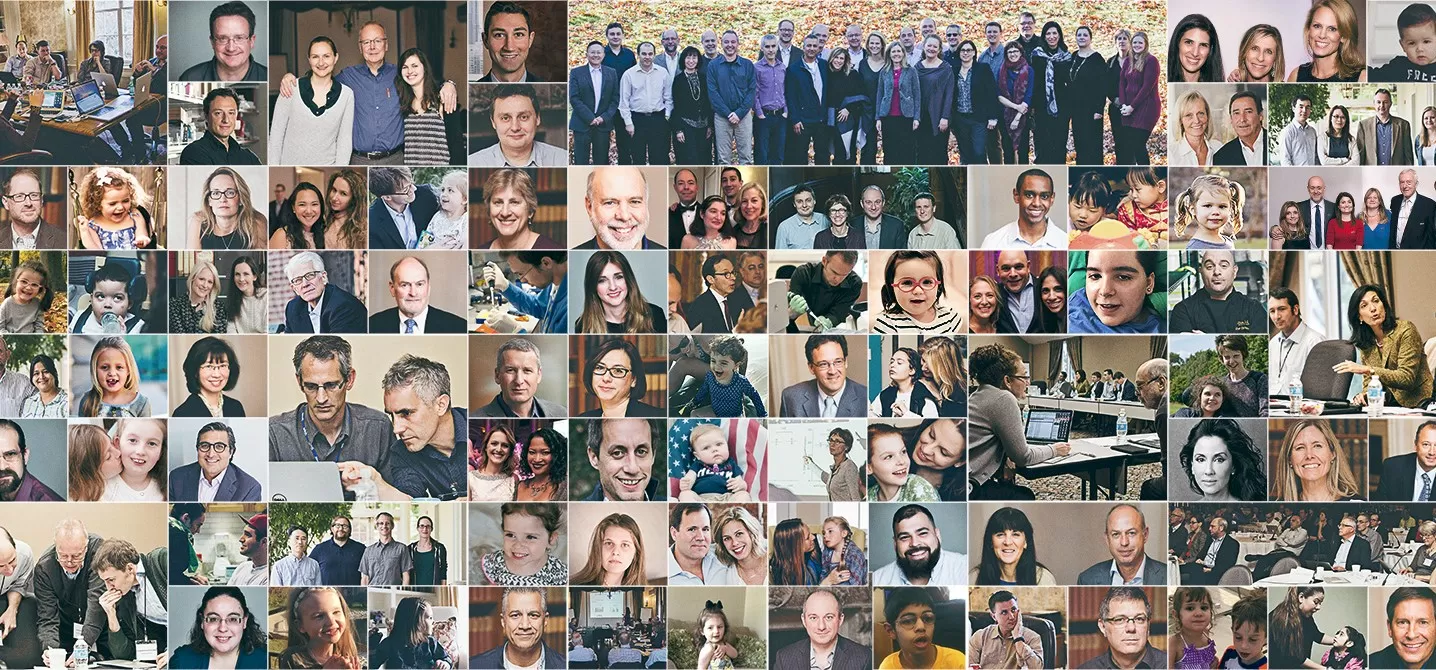A Quick Look Back and a Major Look Forward

RSRT launched eight years ago yesterday. Anniversaries can be an opportunity to look back at accomplishments, but also to define where and how we move forward.
We have come a long way in these eight years. Rett research is in a much more promising and exciting place than it was in 2008. The first thing I want to say is how tremendously grateful I am to everyone who has made that progress possible. Our funding, from day-one and on, has come entirely from the grassroots efforts of families affected by Rett Syndrome. RSRT’s major accomplishments, which I outline below, are because of you. This is the result of your events, letter-writing and crowdfunding campaigns, and outreach to your networks. To say we couldn’t have done it without you would be a huge understatement.
There are also our researchers to thank. I am continuously inspired by their depth of knowledge in their fields, as well as their dedication to pursuing research that is moving us towards changing lives. We are very fortunate to have some of the greatest minds in the world working with us towards treatments and a cure for our children.
I am also acutely aware that while we’ve made a lot of progress, we have not yet delivered on our mission: a cure! With that at the forefront of my mind, I want to tell you about what lies ahead. RSRT is currently in the midst of a strategic planning process. At the heart of the plan is our research roadmap that will lay out where RSRT will focus our efforts and funding for the next three years. In the past, we took somewhat of a shotgun approach to funding research—that is, support a broad spectrum of projects and see which ones get results that warrant further exploration. This was a strategic decision and necessary in order to determine research priorities. I am excited to say that we are now at a point where we can prioritize. Informed by what we’ve learned over the past eight years, we can begin to focus in on the projects that show the most promise. This is a very big and important step for RSRT and for the futures of our children.
The strategic plan lays out a research roadmap to a cure that is bold and ambitious. Our children deserve no less. I’m not going to be shy about saying this—it’s going to take more resources than we’ve ever had before to carry out this plan. We will need more families affected by Rett to step up and fundraise to enable us to carry out the research and achieve the goals of the plan.
We look forward to sharing our plan with all of you in the coming months. In the meantime, I hope you’ll join me in taking stock in the accomplishments you’ve helped make possible.
RSRT Accomplishments
Basic Scientific Discoveries- expand our understanding of Rett and MECP2
- Discovered that the Rett protein, MeCP2, is required throughout life to maintain healthy brain function. (Adrian Bird, Huda Zoghbi)
- Discovered that the genes disrupted in Rett are much longer (over 100,000 nucleotide bases) that the average length of a gene (20,000 nucleotide bases). Labs now testing drugs that specifically down regulate long genes, such as topoisomerase inhibitors. (Michael Greenberg via MECP2 Consortium)
- Identification of a critical novel domain on the Rett protein (NCoR/SMRT Interaction Domain) that could have therapeutic implications for Rett and for MECP2 Duplication Syndrome. (Adrian Bird via MECP2 Consortium)
- The creation and distribution of a number of clinically relevant Rett mouse models that mimic the human disease. These mice provide a useful basis for pre-clinical tests of therapeutic approaches. (Adrian Bird and Michael Greenberg via MECP2 Consortium)
- The revelation that glia play a key role in preventing the progression of the most prominent Rett symptoms displayed by mouse models of the disease.
Translational Discoveries – could lead to new cures and therapies
- Dramatic symptom reversal in Rett mice using gene therapy treatment. (Gail Mandel and Adrian Bird)
- Discovered that the MECP2 Duplication Syndrome is reversible. (Huda Zoghbi)
- Established two entirely novel areas of Rett research: 1) activating the silent MECP2 gene 2) modifier genes
- Discovery that Deep Brain Stimulation may be helpful for Rett and the MECP2 Duplication Syndromes.
- Funded 4 clinical trials (ketamine, copaxone, statin, triheptanoin) for symptom improvement.
Enabling Technology – tools and processes that are necessary to accelerate discovery and development of cures and treatments
- Conceived of and launched the Gene Therapy Consortium to advance gene therapy treatment to clinical trials asap.
- Conceived of and launched the Outcome Measures and Biomarker Development Consortium, a $4.5 million project to identify and validate FDA accepted endpoints for clinical trials in Rett.
- Organized scientific meetings and workshops every year, throughout the year that include the pharmaceutical industry and investors to increase their interest in Rett Syndrome.
Organizational Accomplishments
- RSRT is the only Rett organization in the world that is aggressively funding multiple approaches that could lead to a cure for Rett Syndrome: gene therapy, protein replacement, activating the silent MECP2.
- Since 2008 RSRT has awarded $36 million to research, more than any other Rett organization in the world.
- RSRT is lean. Since our launch an average of 96% of every dollar donated has been channeled to our research program.
- Cultivated global partnerships with Reverse Rett (UK), Rett Syndrome Research & Treatment Foundation (Israel), Rett Syndrome Deutschland, Rett Syndrome Ireland, and more.
- Cultivated national partnerships with Girl Power 2 Cure, Rocky Mountain Rett Association, Rett Syndrome Association of Massachusetts, Rocky Mountain Rett Syndrome Association, and more.
- We refute the conventional practice of labs working in isolation, instead we promote and fund consortia and collaborations in which scientists work across multiple disciplines.


